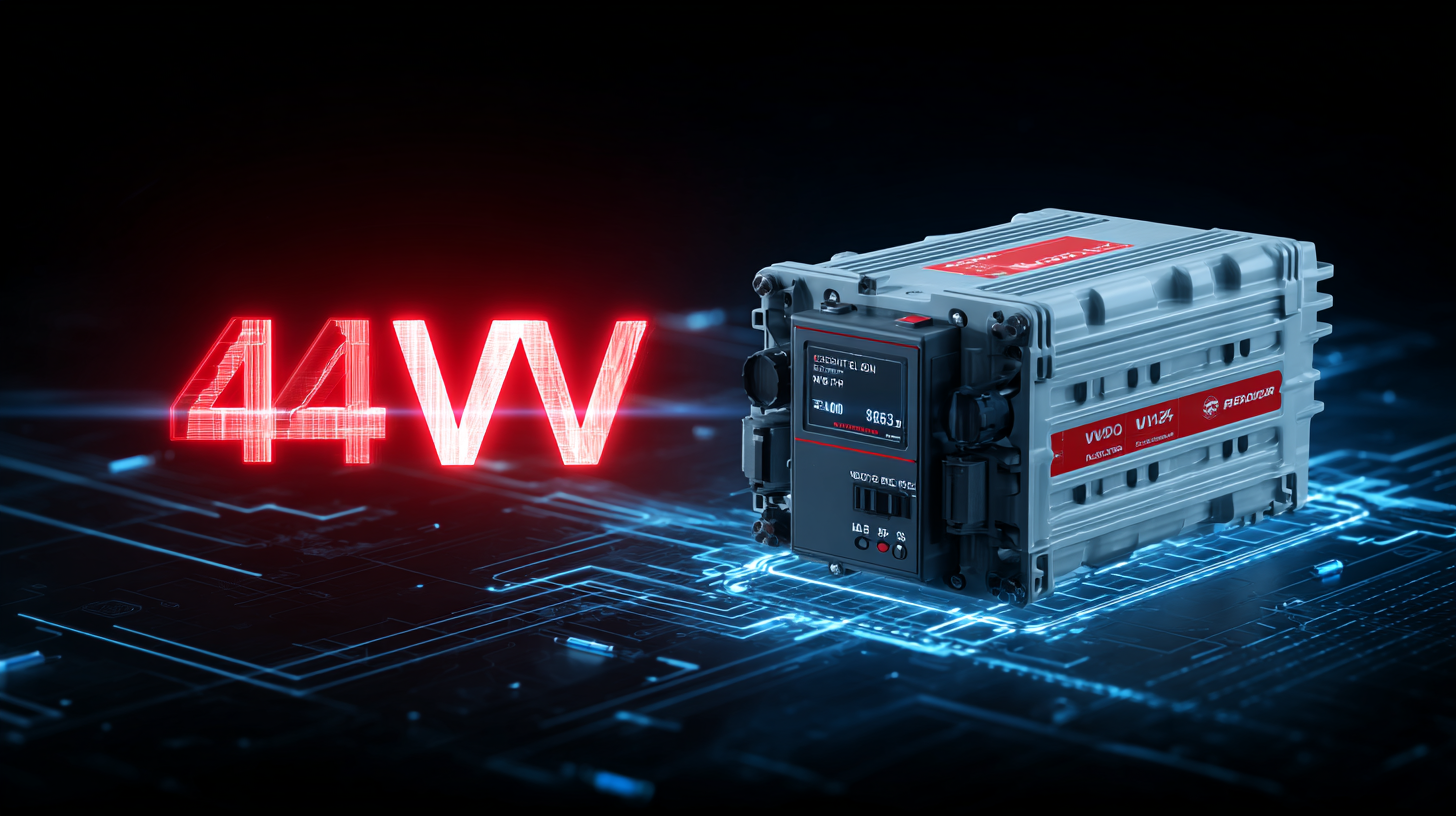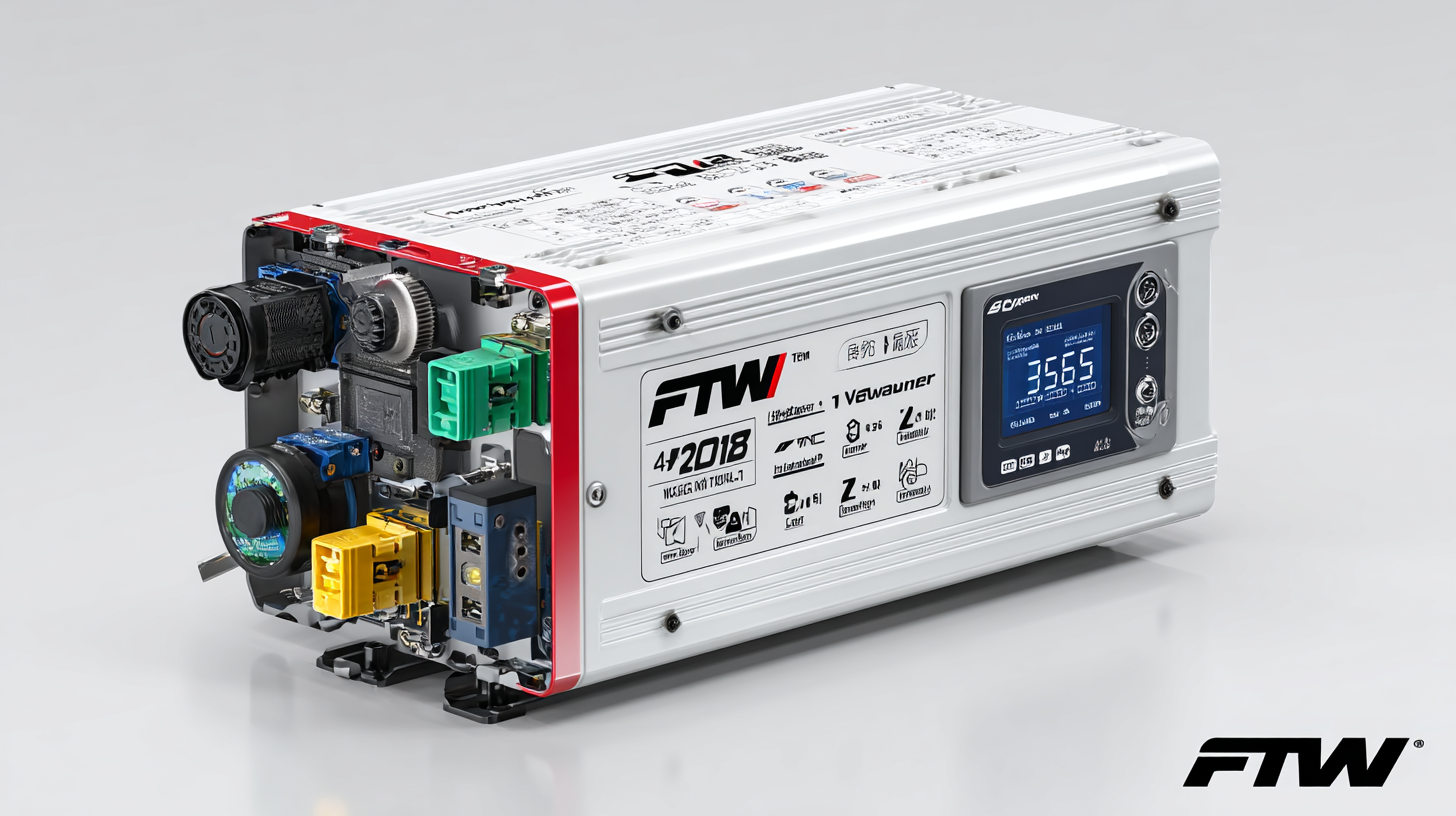Blog
Exploring the 2025 Tech Evolution in Power Solutions How Best 12v To 240v Inverters Will Transform Energy Use
As we venture into 2025, the landscape of power solutions is set to undergo a significant transformation, particularly in the realm of energy efficiency and versatility offered by advanced converters like the 12v to 240v inverter. According to a recent report by Research and Markets, the global market for inverters is projected to reach $17 billion by 2026, driven by the increasing demand for renewable energy sources and the electrification of transportation.
 This surge is particularly evident in China, where the integration of innovative manufacturing techniques is enhancing product quality and expanding global reach. The ability of 12v to 240v inverters to convert low-voltage DC power into high-voltage AC power not only promotes the use of renewable energy but also facilitates the adoption of smart grid technologies. As energy consumption patterns shift towards more sustainable practices, understanding the pivotal role of these inverters becomes increasingly important for both consumers and industry stakeholders.
This surge is particularly evident in China, where the integration of innovative manufacturing techniques is enhancing product quality and expanding global reach. The ability of 12v to 240v inverters to convert low-voltage DC power into high-voltage AC power not only promotes the use of renewable energy but also facilitates the adoption of smart grid technologies. As energy consumption patterns shift towards more sustainable practices, understanding the pivotal role of these inverters becomes increasingly important for both consumers and industry stakeholders.
The Rise of Inverter Technology: Shaping the Future of Energy Solutions
The rise of inverter technology is ushering in a new era for energy solutions, fundamentally transforming how we harness and utilize power. According to a report by the International Renewable Energy Agency (IRENA), the global inverter market is projected to reach $15.4 billion by 2027, driven by the increasing demand for renewable energy integration and energy storage systems. Inverters play a crucial role in converting direct current (DC) from sources like solar panels into alternating current (AC), making them essential for both residential and commercial applications.
As we move towards 2025, advancements in inverter technologies, especially in 12v to 240v models, are expected to enhance energy efficiency significantly. A study from the Global Energy Storage Alliance highlights that efficient inverter systems can reduce energy losses by up to 30%. This development not only supports the growing trend of decentralized energy generation but also empowers consumers to take control of their energy consumption, leading to reduced utility costs and a smaller carbon footprint. The transition to smarter, more adaptable inverter technology signifies not just a shift in how energy is consumed but a broader commitment to sustainable energy practices.
The Rise of Inverter Technology: Shaping the Future of Energy Solutions
This chart illustrates the projected growth in power capacity of 12V to 240V inverters from 2023 to 2025. The data reflects increasing adoption in residential, commercial, and industrial sectors.
Understanding the Transformation from 12V to 240V Inverters
The shift from 12V to 240V inverters marks a significant transformation in how we harness and utilize energy. Traditionally, 12V inverters have been favored for their simplicity and efficiency in powering smaller devices and applications, particularly in automotive and off-grid scenarios. However, as our reliance on energy-intensive appliances grows, the need for higher voltage systems becomes increasingly evident. The transition to 240V inverters enables users to operate more robust systems, allowing for the simultaneous use of multiple high-demand devices, thus enhancing overall energy efficiency.
This evolution not only boosts the performance of personal and industrial energy systems but also aligns with the broader trend towards renewable energy integration. By supporting higher voltage outputs, these inverters play a crucial role in connecting solar panels and energy storage systems more effectively, facilitating the shift towards sustainable energy practices. As manufacturers innovate, the latest 12V to 240V inverters will ensure easier installations, improved safety features, and greater adaptability, all of which are critical for homes and businesses looking to optimize their energy usage in an increasingly electrified world.

Key Benefits of Upgrading to Advanced Inverter Systems
Upgrading to advanced inverter systems marks a significant leap in energy efficiency and accessibility, bringing a multitude of benefits that can transform how we use power in our daily lives. One of the key advantages is their ability to convert low voltage DC power from sources like batteries to higher voltage AC power, making it easier to operate a broader range of appliances and equipment. This capability not only maximizes the use of renewable energy sources, such as solar panels, but also minimizes energy loss during conversion, resulting in more sustainable energy consumption.

In addition to improved efficiency, advanced inverter systems are designed with smarter technologies that offer enhanced monitoring and control features. Users can track energy consumption in real-time and receive notifications on performance metrics, enabling smarter energy management. Furthermore, these inverters are often equipped with protective mechanisms to prevent overloads and short circuits, ensuring a safer and more reliable power supply. The integration of these advanced features ultimately leads to lower electricity bills and a reduced carbon footprint, making it an appealing upgrade for both households and businesses aiming for sustainability.
China's Role in Global Inverter Manufacturing and Innovation
China has emerged as a dominant force in the global inverter manufacturing sector, accounting for over 70% of the world's production. According to a report by the International Energy Agency (IEA), the country’s investments in renewable energy technology and innovation are projected to exceed $100 billion by 2025. This strategic focus on clean energy solutions is critical, especially as the demand for efficient power conversion technologies increases, driven by the rise of electric vehicles and renewable energy sources.
Furthermore, China's advancements in inverter technology are setting benchmarks internationally. The China Renewable Energy Engineering Institute highlights that Chinese manufacturers are not only producing inverters with higher efficiency ratings but are also innovating in smart grid technologies. This includes the integration of IoT capabilities that allow for real-time monitoring and optimization of energy use. As the global shift towards sustainable energy solutions accelerates, China's leadership in inverter innovation will play a pivotal role in transforming how industries and consumers harness electrical energy.
Future Trends: Sustainable Practices in Power Solution Development
As the world marches toward a more sustainable future, the development of power solutions is increasingly informed by eco-friendly practices. One of the most promising advancements in this realm is the innovation of inverter technology, particularly the 12v to 240v inverters, which are set to revolutionize energy consumption patterns. These inverters not only provide flexibility in operating various appliances but also play a crucial role in harnessing renewable energy sources like solar and wind. Their versatility ensures that consumers can utilize energy efficiently while reducing reliance on fossil fuels.
The future of sustainable practices in power solution development lies in the integration of smart technologies with these inverters. By incorporating energy management systems, users can optimize their power consumption, lower electricity bills, and minimize their carbon footprint. Furthermore, the potential for these inverters to support energy storage solutions enhances their appeal, empowering users to tap into stored renewable energy even during peak demand periods. As we look ahead to 2025 and beyond, the emphasis on such sustainable innovations will not only transform individual energy use but also contribute significantly to the broader goal of a cleaner, greener planet.
